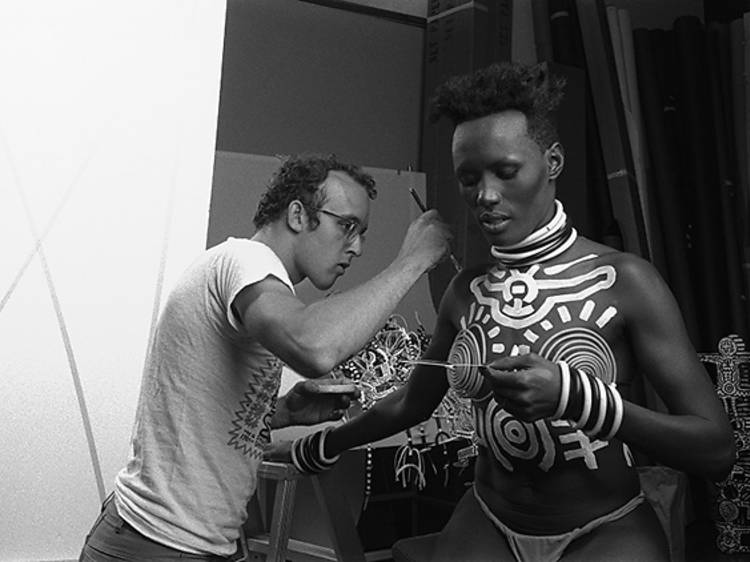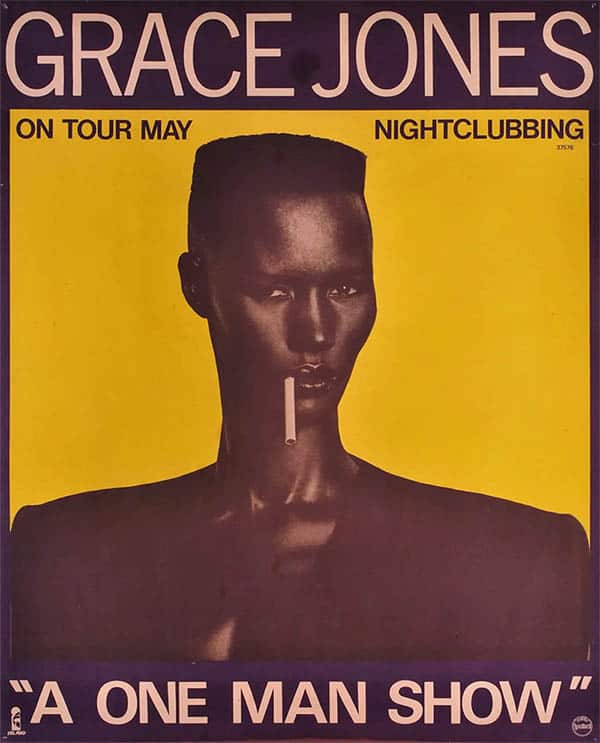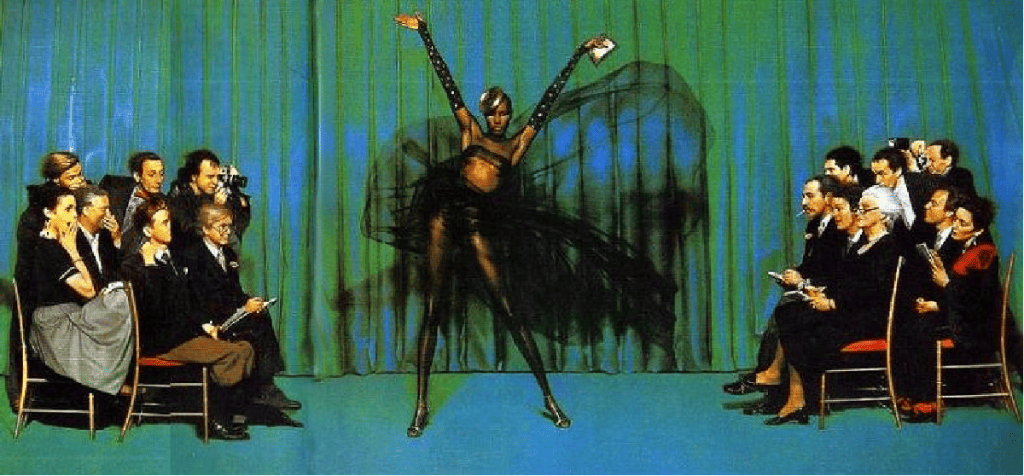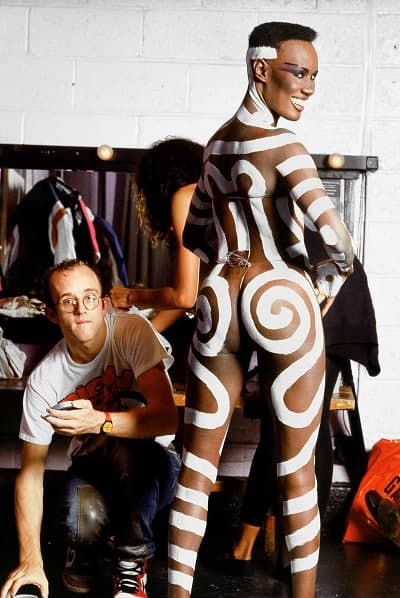Grace Jones and Keith Haring, two iconic figures in the art and music world, collaborated on several notable artworks during their careers, creating a powerful fusion of visual art and music. Their collaborations showcased the vibrant energy and boundary-pushing nature of the downtown New York art scene in the 1980s.
One of their most renowned collaborations was the cover art for Jones's album "Nightclubbing" released in 1981. The cover features a striking image of Jones, her head shaved and painted in Haring's distinctive style. The bold and dynamic lines that characterized Haring's art perfectly complemented Jones's unconventional and androgynous appearance, creating an image that captured the essence of both artists' aesthetics. The artwork became an iconic representation of their collaboration and is widely recognized and celebrated.

Keith Haring and Grace Jones, 1984
In addition to album covers, Haring also created stage sets and costumes for Jones's live performances. One notable example is their collaboration on Jones's "One Man Show" tour in 1982. Haring designed a set that incorporated his signature bold lines and vibrant colors, creating a visually stimulating environment that complemented Jones's energetic performances. Haring's artistic vision and Jones's powerful stage presence merged seamlessly, resulting in an unforgettable experience for the audience.
Their collaborations extended beyond the music realm. In 1983, Jones appeared in a short film titled "A One Man Show," which was directed by Jean-Paul Goude and featured artwork by Keith Haring. The film showcased Jones's unique style and featured Haring's distinctive figures and patterns throughout, creating a visual feast that brought together the worlds of music, art, and fashion.


Jones and Haring shared a mutual admiration and were drawn to each other's artistic expression. Both artists challenged societal norms and pushed boundaries through their work. Haring's art, often addressing social and political issues, resonated with Jones's own desire to challenge conventions and celebrate individuality. Their collaborations represented a meeting of minds, merging their respective art forms to create a powerful and influential visual and auditory experience.
Furthermore, their collaborations exemplified the spirit of the downtown New York art scene in the 1980s. This period was characterized by a cross-pollination of art, music, fashion, and culture. Artists like Jones and Haring embraced this interdisciplinary approach, blurring the lines between different art forms and creating a vibrant and dynamic environment where creativity thrived.
The artistic partnership between Grace Jones and Keith Haring remains an important chapter in the history of art and music. Their collaborations produced visually striking and boundary-pushing artworks that continue to inspire and influence artists today. The combination of Jones's unconventional style, Haring's vibrant art, and the spirit of the downtown New York scene created a fusion that transcended traditional boundaries and captured the imagination of audiences worldwide. Their legacy serves as a testament to the power of collaboration and the ability of art to challenge and transform society.

